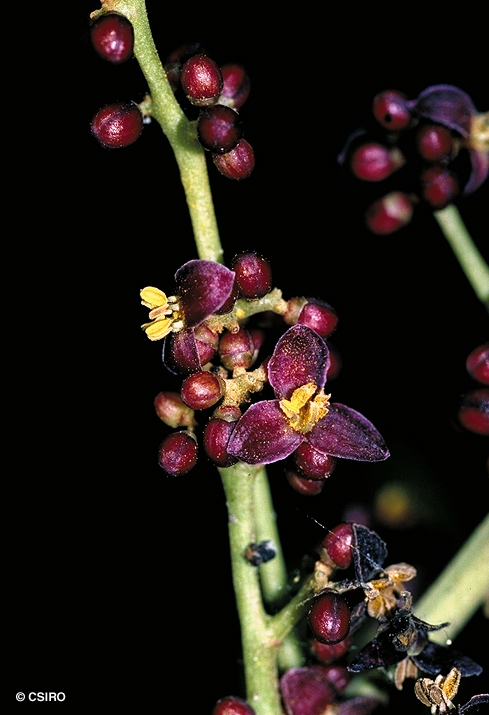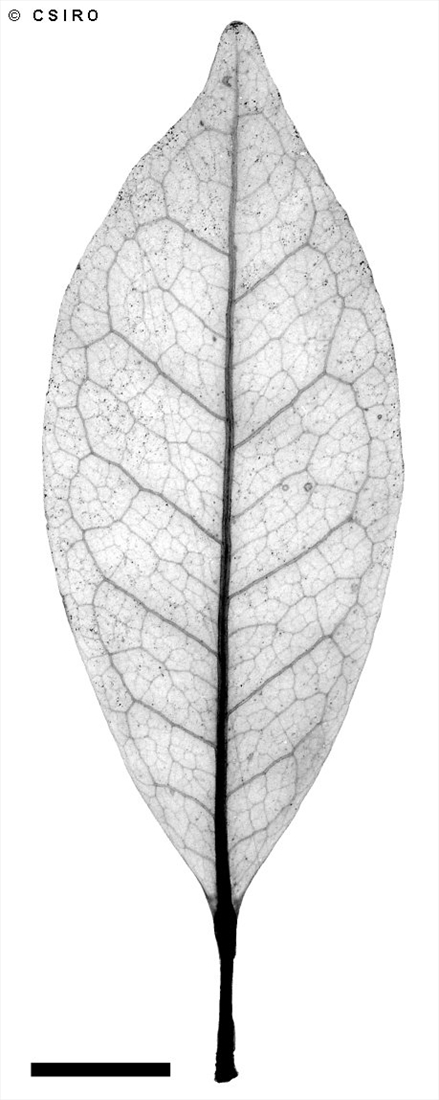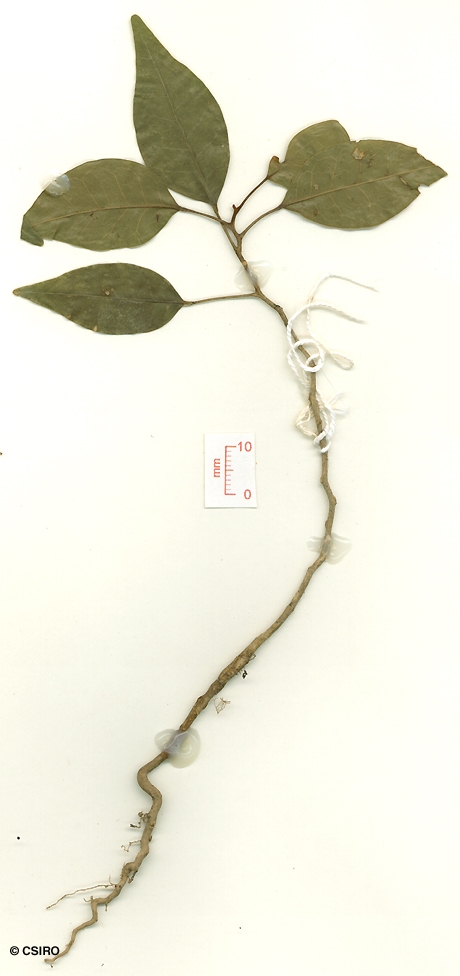Australian Tropical Rainforest Plants - Online edition
Canarium australasicum (F.M.Bailey) Leenh.





Leenhouts, P.W. (1952) Blumea 7: 159.
Brown Cudgerie; Carrotwood; Mango Bark; Mango Carrotwood; Parsnip Wood
Freshly cut bark exudes a strong mango (Mangifera indica) odour and a small amount of clear or slightly milky exudate.
On large trees, the compound leaf is sometimes reduced to the terminal leaflet only or the compound leaf consists of 3-5 leaflets with a pulvinus on the terminal leaflet but not on the lateral leaflets. On smaller trees a pulvinus may be produced not only on the terminal leaflet but also on the lateral leaflets. Lateral veins forming loops well inside the blade margin. Midrib raised on the upper surface. Leaf or leaflet blades about 3-9 x 1.5-4 cm.
Male flowers: Inflorescences about 4-11 cm long, not exceeding the leaves. Calyx +/- cup-shaped, the lobes about 0.5 mm long. Petals dark red to maroon, elliptic to ovate, about 4 x 3 mm. Stamens 6, filaments about 1.8 mm long, anthers yellow or orange. Female flowers: Flowers about 5 mm diam. Calyx green to yellow, +/- cup-shaped, about 2 x 2.5 mm, the lobes about 1 mm long. Petals dark red to maroon, ovate to elliptic, about 3 x 2 mm. Staminodes 6. Ovary globose, about 1-1.5 mm diam. Ovules 1 per locule. Stigma sessile with 3 indistinct lobes.
Fruits about 8-9 mm long. Cotyledons 3-lobed.
Cotyledons trifoliolate with the lateral leaflets divided again almost to the base, petiole hairy. First pair of leaves without teeth. At the tenth leaf stage: new growth clothed in short, rusty brown hairs or scales.
Produces a useful, non-durable, general purpose timber. The timber of this species resembles that of the very durable and highly prized Gmelina fasciculiflora which was used extensively as window sills in North Queensland. There have been cases where enterprising (but rather short-sighted) sawmillers have used the timber of Canarium australianum as substitute material for the manufacture of window sills.
Wood specific gravity 0.54. Cause et al. (1989).





